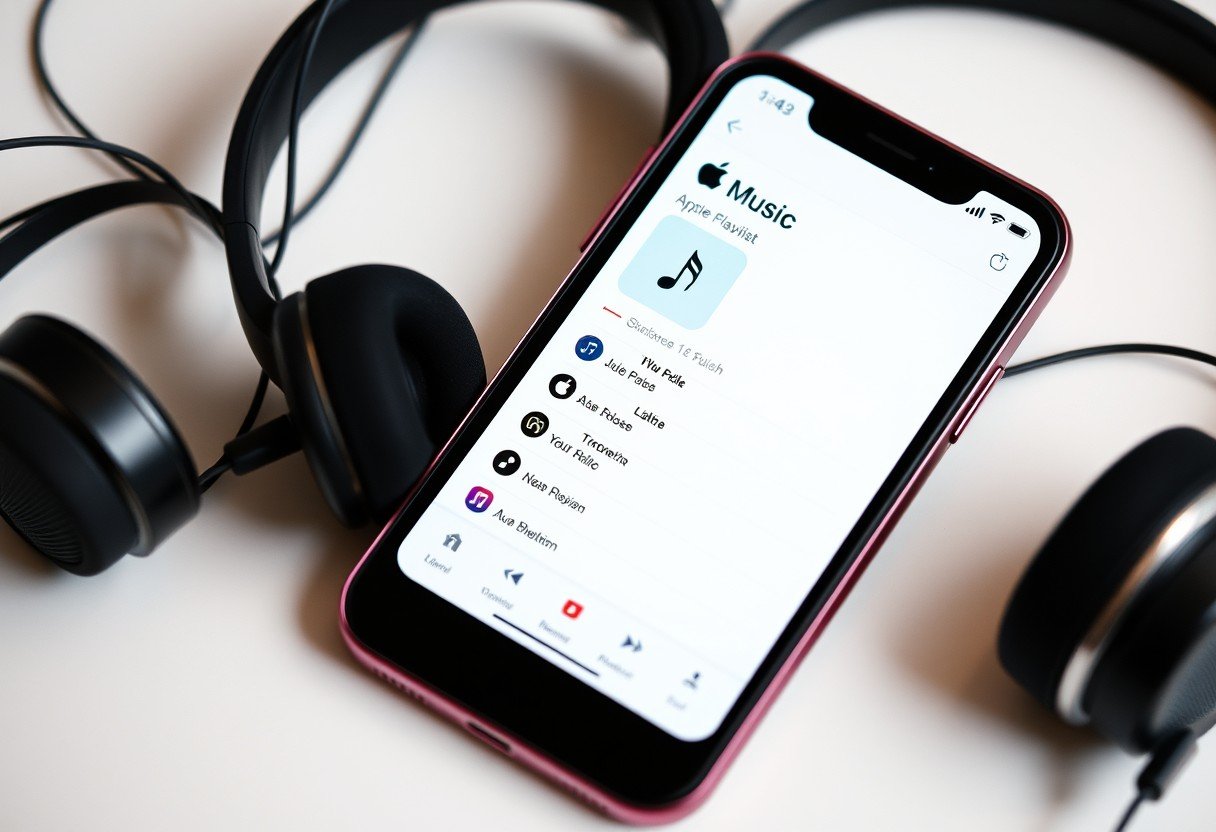Music streaming services can be a source of great joy or immense frustration, and Apple Music often walks a fine line between the two. If you’ve ever felt annoyed by its interface or wondered why a specific song is missing, you are not alone. Many users share these common complaints. Understanding these issues can help you decide if Apple Music is right for you or if another service might better suit your listening habits and needs.
A Confusing and Cluttered User Interface
One of the most common reasons for frustration with Apple Music is its user interface. For many, the experience is far from the seamless and intuitive design Apple is known for. Instead, users often find themselves lost in a maze of menus and icons.
The design can feel incredibly crowded, with too many options presented at once. This “design chaos” makes it difficult to focus on the primary goal: listening to music. Simple tasks like finding a specific playlist or just browsing your library can become a chore, detracting from the overall enjoyment.
Navigation is a significant hurdle, with essential features often buried deep within the settings. You might find yourself performing several clicks for an action that should only take one. This is made worse by inconsistent labeling that can leave you guessing where to find what you need. Common navigation challenges include:
- Difficulty finding recently added songs.
- Playlists and albums being hard to organize.
- The search function sometimes feels less effective than competitors.
This complicated layout can make the platform feel cumbersome rather than the premium experience you pay for.
The High Cost and Subscription Hurdles
For many people, the price of a service is a major deciding factor. While Apple Music is priced similarly to its main competitors, some users question if it provides enough value to justify the monthly fee, especially since there is no free, ad-supported tier to test the waters.
When you compare the pricing of major streaming services, they often look identical on the surface. However, the value proposition can differ based on features and user experience.
| Service | Monthly Price |
| Apple Music | $9.99 |
| Spotify | $9.99 |
| Amazon Music Unlimited | $9.99 |
| YouTube Music | $9.99 |
The family plan, while a good deal on paper, comes with a significant limitation that causes headaches for many. Apple requires all members of a family plan to share the same billing address, which is verified through their Apple ID. This makes it impossible to share the plan with family members who live elsewhere, such as college students or relatives in different cities. This rigid rule can make the family plan impractical for many potential subscribers.
Gaps in the Music Library
A music streaming service is only as good as its catalog, and this is an area where Apple Music sometimes falls short for users. Despite boasting millions of tracks, you may be surprised to find that certain artists, albums, or specific songs are completely missing.
This can be incredibly frustrating when you want to listen to a favorite track and discover it’s not available. These gaps can force you to use other platforms, defeating the purpose of having a single, comprehensive music subscription.
Another issue is exclusive content. Some artists and labels sign deals to release their music exclusively on one platform, like Spotify or Tidal, for a period of time. This means Apple Music subscribers are left waiting for the latest release from a popular artist. This practice can make you feel like you’re missing out and may even pressure you into subscribing to multiple services just to access all the music you love.
Integration and Performance Headaches
While Apple Music is designed to work perfectly within the Apple ecosystem, the reality can be more complicated. Many users report frustrating issues when trying to sync their music library across their iPhone, Mac, and iPad. The experience is not always as seamless as advertised.
The problems become more pronounced when you step outside of Apple’s walled garden. Compatibility with non-Apple devices like Windows PCs and Android phones is often lacking. The apps for these platforms can feel like an afterthought, with fewer features and poorer performance compared to their iOS counterparts.
Device performance can also be a significant issue, even on Apple’s own hardware. Users with older iPhones and iPads have reported that the Apple Music app can be slow, laggy, and prone to crashing. It can also be a major drain on battery life, which disrupts your listening experience and makes using the app a frustrating chore.
Uninspiring Music Recommendations
Discovering new music is one of the biggest appeals of streaming services, but many users feel Apple Music’s personalization is weak. The platform’s algorithms for recommending new songs and artists are often criticized for being less accurate and intuitive than those of competitors like Spotify.
You may find that the curated playlists and radio stations become repetitive, often suggesting songs you already know or have skipped before. This failure to capture your unique musical tastes can lead to a stale and unengaging experience. Instead of a journey of musical discovery, you’re left with a service that struggles to keep things fresh.
This is compounded by a sense that user feedback is often ignored. Many subscribers feel their listening habits, such as skipping tracks or “liking” songs, don’t significantly influence future recommendations. This lack of responsiveness makes you feel unheard and can lead to dissatisfaction with the service’s core function of helping you find music you’ll love.
Concerns Over Audio Quality
With Apple’s reputation for premium products, you would expect top-tier audio quality from its music service. However, some audiophiles and casual listeners alike have expressed disappointment with the sound.
To ensure fast streaming, Apple Music uses compression algorithms that reduce music file sizes. While this technology prevents buffering, it can sometimes come at the cost of audio fidelity. Listeners may notice a loss of subtle details in the music, making it sound less rich than the original recording.
Although Apple Music offers high-quality and lossless streaming options, the service often defaults to a standard quality to save data and ensure smooth playback. You have to manually go into the settings to enable higher bitrates, and even then, a weak internet connection can force the quality back down. This can feel like a constant battle to get the best possible listening experience.
Frequently Asked Questions
Why do some users find the Apple Music interface confusing?
Many users feel the interface is cluttered with too many options and menus. This can make simple tasks like finding a song or organizing a playlist difficult and less intuitive compared to the more streamlined designs of competitors.
Are there really songs missing from the Apple Music catalog?
Yes, while the library is vast, some songs, albums, or artists may be unavailable due to licensing agreements or platform-exclusive deals. This can be frustrating for users looking for specific tracks that are available elsewhere.
Is Apple Music more expensive than other services?
The standard monthly price is competitive with services like Spotify and Amazon Music. However, the lack of a free, ad-supported version can make it feel more costly for users who want to try the service before committing to a subscription.
How good are Apple Music’s song recommendations?
This is a common point of criticism. Many users report that the recommendation algorithm is not as personal or accurate as Spotify’s, often leading to repetitive or irrelevant suggestions that don’t match their listening habits.
Can I use Apple Music easily on Android or Windows?
While apps are available for non-Apple devices, users often report a worse experience. The Android and Windows versions can be slower, have more bugs, and lack some of the features available on Apple’s own devices, leading to a frustrating cross-platform experience.









Leave a Comment